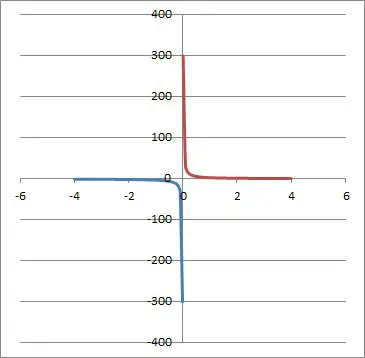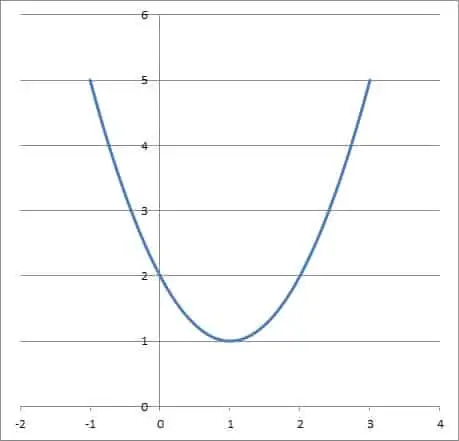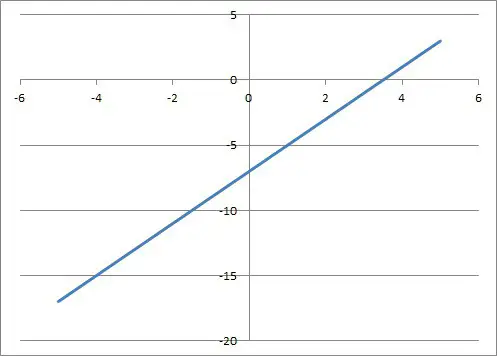Inverse variation comes up often in math and is also used in our everyday lives. However, there are still lots of questions that you can ask about inverse variation.
So, what is inverse variation? Inverse variation is a reciprocal relation between two variables x & y, with the product xy always equal to a constant k. The equation has the form y = k / x, and it has only two variables, each with exponents of 1. The graph has a vertical asymptote at x = 0 and a horizontal asymptote at y = 0.
Of course, the constant k in an inverse variation can be negative or a fraction (or both). Both of these cases have a specific interpretation.
In this article, we will talk about inverse variation, what it is, and why it is important. We’ll also look at some examples of equations, tables, and graphs that show (or do not show) inverse variation.
Let’s get started.
What Is Inverse Variation?
Inverse variation is a relationship between two variables x and y where the product xy is equal to a constant value k. We can write the equation:
- xy = k
or, solving for y:
- y = k / x
Note that this is the equation of a curve with no y-intercept and no x-intercept (there is a vertical asymptote at x = 0, due to the zero denominator, and a horizontal asymptote at y = 0). In this case, we say that “y is inversely proportional to x” or “y varies inversely with x”.

The value k is called the constant of variation. It tells us the product of x and y.
For example, if we have the inverse variation y = 1 / x, then y is halved (divided by 2) whenever x is doubled (multiplied by 2). Similarly, y doubles whenever x is halved
Similar reasoning applies for any multiple. If we multiply x by 3, then we must divide y by 3 in order to keep the product xy constant.
You can see an example of a table for the inverse variation y = 24 / x below.
| x | y |
|---|---|
| 1 | 24 |
| 2 | 12 |
| 3 | 8 |
| 4 | 6 |
inverse variation
relation y = 24 / x
or xy = 24.
How Is Inverse Variation Used In Real Life?
Inverse variation is important because it can be used in several applications in our everyday lives. For example, we can use inverse variation for:
- Distance Traveled – if you want to travel a distance of 200 miles, the time it takes will depend on your speed. The equation D = ST (distance = speed*time) with D = 200 is an inverse variation relationship between the variables speed and time: ST = 200.
- Area Of A Rectangle – if you want a rectangle with an area of 100 square units, the length of the rectangle will depend on the width of the rectangle. The equation A = LW (area= length*width) with A = 100 is an inverse variation relationship between the variables speed and time: LW = 100.
- Data Processing – if you want to process 50 gigabytes of data, the time it takes will depend on the computer speed. D = CT (data = computer speed*time) with D = 50 is an inverse variation relationship between the variables computer speed and time: CT = 50.
So, there are plenty of uses of inverse variation in our lives. However, this still leaves the question of how to tell that an equation, table, or graph is an inverse variation.
How To Know If An Equation Is Inverse Variation
To tell if an equation is an inverse variation, look for the form y = k / x or a product of the variables x and y. In particular, this means:
- There are only two variables (in our examples, we use x and y for our two variables).
- The only exponent of each variable in the equation is 1 (that is, there are no terms like x2, y2, x3, y3, etc.)
- The variables are multiplied (we have an xy term, which may have a coefficient other than 1).
- The constant term in the equation is not 0 (an equation like xy = 0 is not an inverse variation)
Example 1: An Equation That Is An Inverse Variation
Consider the equation:
- y = 2 / x
This is an inverse variation, since:
- There are only two variables: x and y.
- The exponent on each variable is equal to 1.
- The variables are multiplied (we have an xy term if we solve for the constant: xy = 2).
- The constant term in the equation is not 0 (we can rewrite as xy = 2).
Example 2: An Equation That Is Not An Inverse Variation
Consider the equation:
- y = 2x + z
This is not an inverse variation, since:
- There are three variables: x, y, and z.
Example 3: An Equation That Is Not An Inverse Variation
Consider the equation:
- y = 2 / x3
This is not an inverse variation, since:
- The variable x has an exponent of 3.
Example 4: An Equation That Is Not An Inverse Variation
Consider the equation:
- y / x = 2
This is not an inverse variation, since:
- There is no xy term (the variables x and y are not multiplied, but rather they are divided).
Note: this is an example of direct variation, since y = 2x.
Example 5: An Equation That Is Not An Inverse Variation
Consider the equation:
- y = x + 1
This is not an inverse variation, since:
- There is no xy term (the variables x and y are not multiplied, but rather they are subtracted if we solve for the constant: y – x = 1).
How To Tell If A Table Is Inverse Variation
To tell if a table is an inverse variation, look for a reciprocal relationship between the columns in the table. In particular, this means:
- There are only two variables (in our examples, we use x and y for our two variables).
- The product of the two variables is constant (the product xy always has the same value).
- The table has no points with x = 0 or y = 0 (otherwise, we would get a zero denominator).
Example 1: A Table That Is An Inverse Variation
Consider the table:
[t
| x | y |
|---|---|
| 1 | 120 |
| 2 | 60 |
| 3 | 40 |
| 4 | 30 |
| 5 | 24 |
| 6 | 20 |
inverse variation
relation y = 120 / x
or xy = 120.
This table is an inverse variation, since:
- There are only two variables (x and y columns in the table)
- The product of the variables is constant: xy = 120 for every row.
- The table does not contain any points with x = 0 or y = 0.
Example 2: A Table That Is Not An Inverse Variation
Consider the table:
[t
| x | y | z |
|---|---|---|
| 0 | 0 | 0 |
| 1 | 2 | 5 |
| 2 | 7 | 8 |
| 3 | 8 | 9 |
| 4 | 10 | 12 |
relationship between
variables x, y, and z.
This table is not an inverse variation, since:
- There are three variables: x, y, and z.
Example 3: A Table That Is Not An Inverse Variation
Consider the table:
[t
| x | y |
|---|---|
| 2 | 4 |
| 3 | 3 |
| 4 | 2 |
| 5 | 1 |
relation that is not
an inverse variation.
This table is not an inverse variation, since:
- The product of the variables is not constant.
For example, in the first row, the product of x and y is 2*4 = 8.
In the second row, the product of x and y is 3*3 = 9.
Since 8 is not equal to 9, there is no constant k such that xy = k for all points in the table.
How To Know If A Graph Is Inverse Variation
To tell if a graph is an inverse variation, look for a curve that has a vertical asymptote at x = 0 and a horizontal asymptote at y = 0. In particular, this means:
- The graph is a curve, not a line or parabola
- The graph has a vertical asymptote at x = 0 (graph does not touch the y-axis).
- The graph has a horizontal asymptote at y = 0 (graph does not touch the x-axis).
- As the absolute value of one variable increases, the absolute value of the other variable decreases (as you move right on the graph, the absolute value of y decreases)
Example 1: A Graph That Is An Inverse Variation
Consider the graph:

This graph is an inverse variation, since:
- The graph is a curve (not a line or parabola or other curve).
- The graph has a vertical asymptote at x = 0.
- The graph has a horizontal asymptote at y = 0.
- As the absolute value of one variable increases, the absolute value of the other decreases.
Example 2: A Graph That Is Not An Inverse Variation
Consider the graph:

This graph is not an inverse variation, since:
- The graph is a parabola.
- It has no vertical asymptote at x = 0 (it intersects the y-axis at the point (0, 2)).
Example 3: A Graph That Is Not An Inverse Variation
Consider the graph:

This graph is not an inverse variation, since:
- As the absolute value of one variable increases, the absolute value of the other increases.
How To Solve Inverse Variation
To solve an inverse variation, plug in matching values of variables to find k. Then, if necessary, use the value of k with a value of x or y to find the other variable’s value.
Example 1: Solving An Inverse Variation For k
Let’s say that there is an inverse variation between x and y. That means:
- y = k / x
for some constant k.
Let’s assume we know that y = 4 when x = 5. Plugging in these values of x and y, we get:
- y = k / x
- 4 = k / 5
- 20 = k
So, the constant of variation is 20, and our equation is y = 20 / x.
Example 2: Solving An Inverse Variation
Let’s say that there is an inverse variation between x and y. That means:
- y = k / x
for some constant k.
Let’s assume we know that y = 10 when x = 3. What is y when x = 5?
First, we need to find k. Plugging in x = 3, y = 10, we get:
- y = k / x
- 10 = k / 3
- 30 = k
So, the constant of variation is 30, and our equation is y = 30 / x.
Now, we can find y when x = 5:
- y = 30 / x
- y = 30 / 5
- y = 6
So, y = 6 when x = 5.
Can Inverse Variation Be Linear?
Inverse variation cannot be linear because a line cannot be an inverse variation. Remember that the graph of a line comes from the equation y = mx + b, which gives us two cases:
- If b = 0, we have a direct variation (y = mx).
- If b is not zero, we have a line y = mx + b that intercepts the y-axis at the point (0, b). This means that there is no vertical asymptote at x = 0, and thus no inverse variation.
Note that a line can also be vertical, with the equation x = a. This is also not an inverse variation, since there is only one variable involved.
Can Inverse Variation Be Negative?
Inverse variation can be negative. To be more precise, the constant of variation k can be less than zero (k < 0).
In practical terms, k < 0 means that y and x will have opposite signs. This is because xy = k, and the product of two positives or two negatives would be positive.
However, it is still true that as the absolute value of x increases, the absolute value of y will decrease. Similarly, as the absolute value of x decreases, the absolute value of y will increase.
For example, if k = -5, then we have the inverse variation y = -5 / x.
If x = -5, then y = 1.
If x = -1, then y = 5.
If x = 1, then y = -5.
If x = 5, then y = -1.
The graph will be a curve with vertical asymptote at x = 0 and horizontal asymptote at y = 0.
Conclusion
Now you know what inverse variation is and how to tell from an equation, table, or graph. You also have some examples that do not show inverse variation between two variables.
I hope you found this article helpful. If so, please share it with someone who can use the information.
Don’t forget to subscribe to my YouTube channel & get updates on new math videos!
~Jonathon

